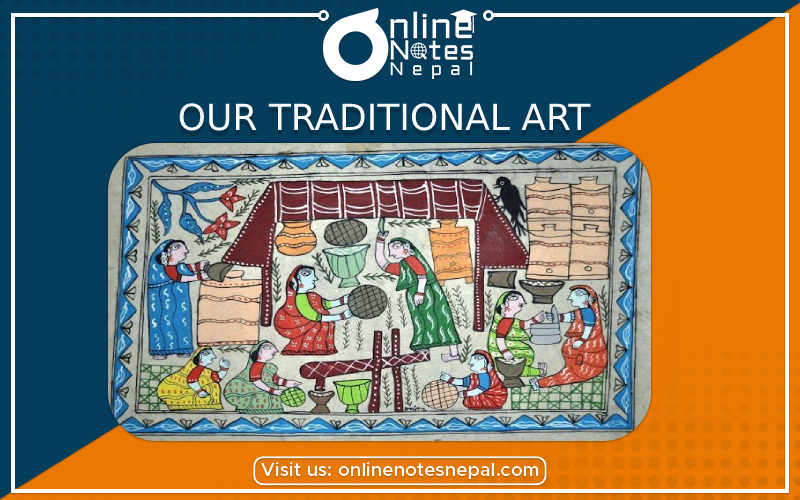Published by: Mandira
Published date: 14 Jan 2022

Art is the expression of creative mind. It not only reflects the creativity of the artist but also environment and situations where the artist lives. So it has a reflection of the overall lifestyle of the contemporary society.
It is believed that Nepali art and culture were parallel in existence, however, the oldest evidence that has been traced belongs to the fourth century i.e. The Lichchhavi period which is considered to be “The Golden Age Of Nepali Art”.Nepalese art is renowned for its simplicity, originality, and specialty. Its theme has basically been religious, particularly Hindu and Buddhist.
Over the centuries, the environmental factors in the society, nation, and the state of the artist have affected the subject of arts. Historical sculptures and artworks were mainly religious, mystical, and symbolic. Whereas, the subject of artworks of the periods with political revolution such as the Rana Regime was based on secularism, realism, etc.
Later, after the fall of the Rana regime, artists practiced impressionism, fauvism, expressionism, abstractionism in their artworks. Besides the internal issues, western culture and practices also inspired artwork in the past. Even today, artists practice symbolism, abstractionism, impressionism, and use the various metaphorical symbol with hidden meanings and messages.
Historically, architectural feats and structures, wooden carvings, manuscripts, mandala, wall paintings, portrait painting, were some of the major artworks.
The forms of art in context with Nepal are innumerable, the artworks can be classified in the following ways.:-
In the past, paintings were mainly done in manuscripts, walls, wood, copper or other metal plates, or cloth. Local materials such as minerals, plants, soil etc were used for extracting colors. Thangka Paintings, Mithila paintings, Pauwa paintings, are some examples of Nepali paintings. These days paintings are mostly done in canvases and are influenced by western culture.
The intricate linings of the wooden windows and doors of a temple, the complex geometry of a stupa, the prayer wheels, are examples of architecture. Architectural art can mainly be seen in religious sites or historical areas. Architecture has had major shifts according to the eras and revolutions that occurred with time.
Artists mainly made use of bronze, granite, sandstone, limestone, for sculpting figures of gods, leaders, and rulers. The statues of gods, various rulers can still be seen in historical areas.
Traditionally a lot of utensils and household materials used by Nepalese were made out of molded clay such as pyala, gamala, gyampo, gagri, diyo, lamps, flower vases and so on.
Besides the form of art listed above, local songs, traditional musical instruments, traditional dances also reflect Nepali art. Art accentuates looks making things look more appealing to the eye.
More importantly, Nepali art emphasizes the divinities of religion and the connection of man with God and nature, it symbolizes various life processes and stages such as birth, youth, death in the form of intricacies. Arts act as historical evidence and symbolic representation for the rich history that we possess.